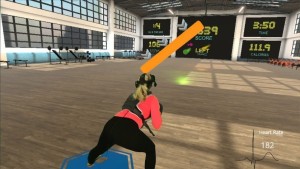Living in a world with COVID-19 is like living in our own virtual reality….
Just kidding. I can’t do another COVID-19 post. My last one was about COVID-19 and that was back in April. It’s time for me to think of another topic.
No, this is about actual virtual reality (VR). Over the past five years, some well-known tech companies (Facebook, as an example) have been creating VR headsets that are available to the public. It sounds pretty futuristic and hard to believe, but they’re actually a lot more advanced than people would think. I had heard from some friends that they were impressive, but I remained skeptical until I was able to try my brother’s headset. After that, I was convinced and I bought one for myself.
When you buy a VR set, it comes with a headset, two hand-held joysticks, and two “base stations”. These are pieces of equipment that you set up in a designated space in your house, and they are able to track your movement in that area. With the headset on, the controllers and base stations can accurately track your body movement and your finger motions; it makes for an extremely immersive experience.
Most people might assume that these VR sets are primarily for nerdy millennials who like gaming, but that actually wasn’t the reason I bought the VR. With the cold Boston winter looming, I was concerned about finding a way to exercise. I had been running outdoors as my primary form of exercise, but due to my asthma acting up when running in cold weather, that isn’t an option for me in the winter, and going to a gym is also not an option due to our current circumstances. I had always hated at-home workouts because I never found much motivation doing exercise alone in my room. When I researched VR more, I realized it was actually an extremely effective way to exercise at home. Using VR, developers have created many workout apps that will have you jumping over or ducking under obstacles, dodging balls, and punching target dummies, until you’re completely out of breath. The best part is you’re so focused on what’s going on around you in the VR app that you don’t even remember that you’re working out. I’ve had a great time so far using this a few times a week for exercise, and I would really recommend it to people who are looking for motivation to work out.
Some people have even taken this a step further and are actually leading yoga classes, meditation classes, and exercise classes – all in Virtual Reality. People from all over the world can put on their VR headset, join a class, and be transported to a virtual workout room where they can see the instructor and other class members, and copy all their body movements and directions. I haven’t experimented with these yet as I’m happy just exercising on my own, but there are options out there for people who like a more social exercise experience.
This got me thinking about where this technology could go in the future. With the pandemic, we saw a huge move to remote work, and it was generally agreed upon that turning on our video cameras was now a recommended best practice, as it helps us feel more connected and improves communication during meetings. If society continues to promote and improve remote work, is it possible that in five or ten years from now, we’ll all be putting on VR headsets and joining a virtual conference room to truly feel like we’re in the same room? If so, I will definitely make my virtual character look like Yoda. I wonder if that will be against our dress code.



There are thought leaders in the education world trying to bring VR into workplace training. I have a colleague who works in medical simulation who says VR is the next big in clinical training. But then there are a few crusty old academics who think VR is just a solution in search of a problem. That aside, I think you’d make a fine Yoda.